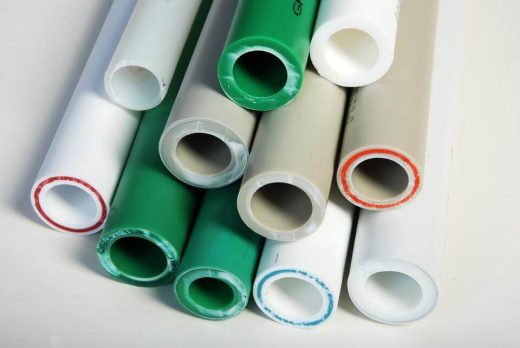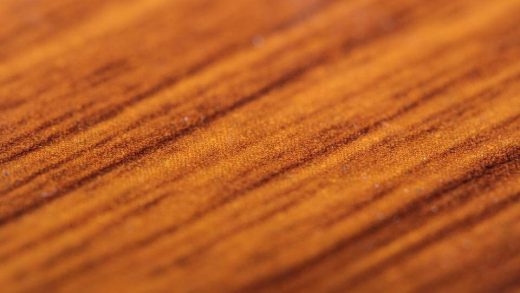INTRODUCTION
The word Plastic is derived from the Greek word plastikos meaning capable of being shaped or moulded. They comprise of wide range of semi-synthetic or fully synthetic organic compounds that are malleable, durable and cheap. In the case of developed economies, one-third of plastic is used in packaging and also in buildings such as plumbing or vinyl siding or in plumbing. Plastics have evolved from using natural plastic materials such as chewing gum to chemically modified raw materials such as natural rubber, collagen, galalite, nitrocellulose. It is then finally transformed into fully synthetic molecules such as synthetic molecules bakelite, epoxy, polyvinyl chloride, etc. In the Middle Ages, cattle horns were used as windows for lanterns, while expanded polystyrene was used for buildings isolation which Dow Chemical invented in 1954. As times are changing uses of plastics are being modified keeping in mind the properties, advantages, disadvantages and uses.
PROPERTIES THAT ENHANCE ITS SUITABILITY
Properties that make plastic suitable to be used for building a home are –
- The main property that makes plastic suitable to be used in construction is its lightweight property yet strong which makes it easier for transportation, loading-unloading, etc.
- It is also corrosion resistant as it has strong weather fighting ability which leads to less maintenance in case of buildings.PPS (Polyphenylene Sulphide) is a chemical and corrosion-resistant plastic polymer typically utilised in applications involving high-temperature exposure to corrosive chemicals.
- The flow of any liquid substance to other materials through it. In simple words, it is impermeable because of its structure. The formation makes them polymeric chains. Such a structure provides the quality of water repellency which makes building leak proof.
- It is resistant to fire as it has added antimony trioxide together with a brominated compound to polyethylene during processing. Antimony trioxide acts synergistically with brominated compounds to intensify fire-retardant properties by the slowdown of the combustion process. So additional fireproofing in not required in buildings.
- Plastics are flexible as they have anti-vibration properties, making them suitable to undergo large deflections as in earthquakes without causing deformation. The seismic performance of the building is improved through this.
ADVANTAGES OF USING PLASTIC
- Plastics are durable as they are not biodegradable and so can withstand for a long period of time.
- Plastics possess very good strength and toughness which does not let it deform its shape.
- Plastics are cheap to produce and can be very easily found in the market by the buyer for building a home.
- They can be reused if dismantled and can be easily joint with other plastics as in case of plumbing.
- Plastics take up less space in the case of landfills. Even though it can take a significant amount of time for plastic materials to break down in a landfill, the amount of space taken up by it in these waste disposal areas is minimal as compared to other items. Products made of paper take up seven times more volume.
- Methane does not get form when plastics start decomposing as compared to organic materials. When plastics begin to degrade, they do not produce this gas, making it easier to calculate the product’s complete lifecycle. It can be used to knock down buildings.
- Plastics contain a high energy density, so incinerating plastics can be pretty helpful in some situations because of their high energy density rating.

Fig 1: Pipes used for Plumbing
COURTESY: PIXABAY
DISADVANTAGES OF USING PLASTIC
- Majority of the world’s pollution found in the oceans are mainly due to plastic which is killing animals of all kind since they are consuming plastic or getting trapped in them.
- Although plastics are cheaper to be found, it impacts lives of people which in turn is costlier.
- Plastics tend to soften at elevated temperatures. This restricts its use in main structural elements and also in hot water systems.
- Cold climates can cause the plastic to become brittle and fracture under pressure. So, it is advisable not to be used in cold climatic conditions.
- Plastics are difficult for recycling, and there rises concern over their decomposing as many plastics take millions of years to decompose.
- Plastics have a low modulus of elasticity, making them unsuitable for load-bearing applications like beams and columns.
- Although the fireproof property exists in plastic, many varieties of plastics have high thermal expansion rates, which requires more detail in design to allowadequate thermal movement.
USES OF PLASTICS
Coming on the purpose, plastics have innumerable uses. Some of them are –
- Corrugated plastic sheets can be used for roofing purposes for diffusing heat insulation and hence reducing heating costs.
- In place of traditional products for cladding panels, soft boards, fascia, etc., UPVC (Unplasticized Polyvinyl Chloride) products are used because of their advantage like lack of wrap, resistance to rot lighter weight.
- Plastic has anti-vibration properties.Airborne noises can be dealt with it because of this property.
- It reduces loads in buildings, so buildings do not become as heavy as they are expected to be when traditional materials are used. One such plastic material used in construction.
- For thermal insulation, plastic acts as an excellent product. By incorporating foamed plastic sheeting within the structure, this can be achieved.
- Plastic sealants are flexible and more widely used.
- Plastic decorative laminates are well known for panelling or furniture purposes as they are not attacked by termites, as in the case of wood.
 Fig 2: Corrugated Plastic sheet
Fig 2: Corrugated Plastic sheet
COURTESY: PEXELS

Fig 3: Plastic Laminate resembling wood
COURTESY: PIXABAY
FUTURE SCOPE OF USING PLASTIC
Constructing homes using plastic is nowadays becoming a trend. For this, different admixtures are used, which in turn increases strength. Recycled plastic bricks are coming into use which has many advantages like –
- Low environmental impact.
- Reduced energy consumption
- Thinner and lighter than conventional bricks
- Low-cost modular housing
- Building structurally sound to withstand an earthquake
- Excellent insulation properties (about five times more than conventional bricks)
- noise insulation
Miniwiz Sustainable Energy Ltd. has already constructed several structures, including factories, IMAX theatres, entertainment campus, and exhibition areas in Taiwan, Malaysia, and China. One of their recent addition is the Eco Ark Pavilion in Taipei. The walls of this structure are entirely formed of Polli-bricks, which are plastic bottles that slot together like Lego parts. Much of their raw material comes from recycled water bottles. Similarly, other companies are using plastic using innovative ways like Byfusion, Conceptos plasticos and many more.
CONCLUSION
Plastic is undoubtedly the most revolutionary product in history ever. It provides us with more advantages compared to disadvantages. Its uses in a building are evolving with changing times, and in future, some unexpected benefits in buildings can be thought of like its use in load-bearing, more uses in climatic conditions, etc. China produced the most significant quantity of plastic, at nearly 60 million tonnes. The United States followed this at 38 million, Germany at 14.5 million and Brazil at 12 million tonnes. These developed countries are taking plastic to the next level. Hence, in the future, people can think about a safe environment with plastic.
REFERENCE
- Slideshare, “Building Materials as a Plastic”- https://www.slideshare.net/abhishekmewada54/building-materials-as-a-plastic
- Institution of Civil Engineers, “Plastic in construction” – https://www.designingbuildings.co.uk/wiki/Plastic_in_construction>
- Green Garage, “17 Biggest Advantages and Disadvantages of Plastics” – https://greengarageblog.org/17-biggest-advantages-and-disadvantages-of-plastics
- EcoFrenzy, “Building the future with recycled plastic bricks” – https://ecofrenzy.com/building-the-future-with-recycled-plastic-bricks/
- Our World in Data, “Plastic Pollution” – https://ourworldindata.org/plastic-pollution
- Wikipedia, “Plastic” – https://en.wikipedia.org/wiki/Plastic#History
If you have a query, you can ask a question here.


